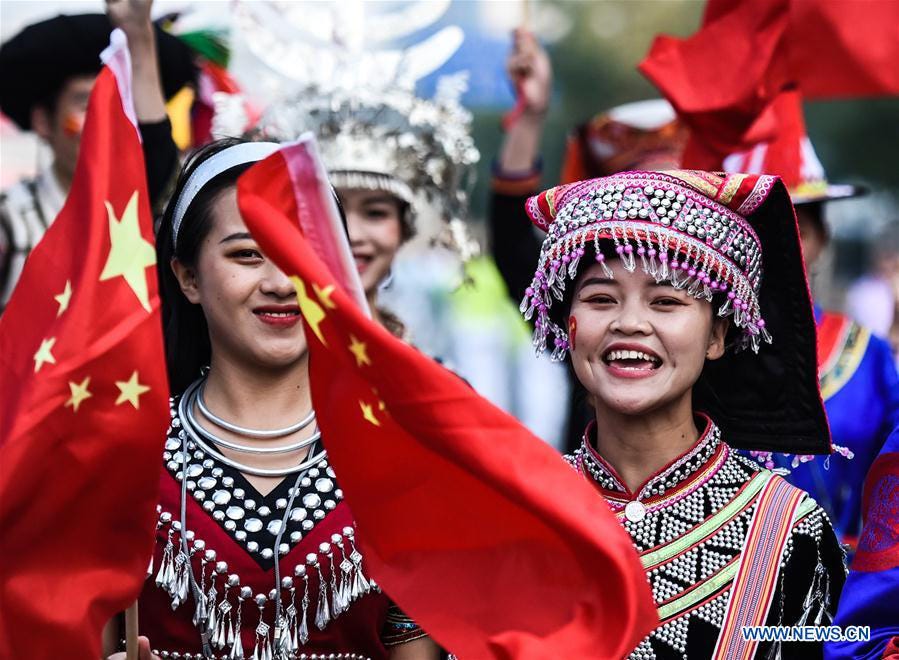PRC 75 Today: the Transition to Socialism
by Michael Roberts
Today is the 75th anniversary of the founding of the People’s Republic of China (PRC). The survival of the PRC is now longer than the Soviet Union, which lasted 74 years. China has nearly one-fifth of the world’s population and on some measures is the largest economy in the world, although per person national income is only 30% of that of the US.
What sort of economy and state is China? Is it capitalist or socialist? The answer to those questions must start with Marx’s law of value, which defines the nature of mode of production and social relations under capitalism. It continues with an understanding of the concept of a transitional economy between capitalism and socialism. We can define several criteria for an economy in transition to socialism. Based on those criteria, China is not a capitalist economy; its phenomenal economic success is product of a predominantly state-owned and directed economy clearly distinct from capitalist economies, whether democratic or autocratic. However, it is still far away from achieving socialism or communism. It is an economy in a “trapped transition”. It is trapped because it lacks any meaningful forms of workers’ democracy and it is surrounded by the forces of imperialism which seek to strangle it. Indeed, any transition to socialism requires international coordination and unity to develop the productive forces and sustain workers’ control.
The debate within the CPC leadership continues about which way to take China: towards a full market economy open to the winds of global capitalism or to stay as they are. But the current CPC leaders under Xi plan no change in the general philosophy of “socialism with Chinese characteristics” and thus the maintenance of the dominance of the state sector. Also, there is no intention of moving towards “democracy” or control of even local legal systems and decisions by the people. On the contrary, the leadership has set up even more repressive state security services to curb any dissidence, either from capitalists or the general population. So how can we characterize China in 2022?
China is not a capitalist economy, let alone an imperialist one (Carchedi & Roberts, 2021). In Marxist terminology, it is a “transitional economy”, namely one in between capitalism and socialism, but presumably heading towards socialism. That transition involves the loss of state power by capital and its “armed bodies of men” (Marx, 1875). The transitional economy has common ownership of the bulk of the means of production and credit and the planning of investment and production rather than being left to market forces. The aim is to raise the level of technology and productivity of labor in order to reduce working hours and gradually end scarcity in social needs. There should be a gradual replacement of commodity production with direct production for use; the gradual ending of wage labor and money, both as a means of exchange and as a store of value; and what Marx and Engels called the progressive “withering away” of state power (armies, police, officialdom). On these criteria, China is clearly not socialist. China is a transitional economy as capitalist state power has been abolished and capitalist production reduced, but China does not meet the other criteria to make a transition to socialism: in particular, there is no equalization or restrictions on incomes and personal wealth; and the large capitalist sector is not steadily diminishing, on the contrary. But on the other hand, capitalists do not control the state machine, the Communist party officials do; the law of value (profit) and markets do not dominate investment, the large state sector does; and that sector (and the capitalist sector) are under an obligation to meet national planning targets (at the expense of profitability, if necessary) (Roberts, 2021).
China is at a crossroads in its development. Its capitalist sector has deepening problems with profitability and debt. The current leadership has pledged to continue with its state-directed economic model and broaden out its focus on economic growth to include targets for environmental protection, innovation and self-sufficient development (Roberts, 2020c). This is all part of the strategy of developing a “dual circulation” economy in which China will develop domestic demand and self-sufficiency while the rest of the world remains stalled by coronavirus and economic crises (Roberts, 2020b). China’s leaders are determined to resist the new policy of “containment” emanating from the “liberal democracies”. The trade, technology and political “cold war” is set to heat up over the rest of this decade, while the planet heats up too (Roberts, 2020c). But as the components of a transitional economy from capitalism to socialism reveal, this qualitative change does not mean or guarantee that China will progress “towards socialism”, as the experience of the 70 years of the Soviet Union confirms. China is still far away from that. Indeed, the forces of imperialism from without and of the law of value within from domestic capitalist sectors suggest that China is in a “trapped transition” which could eventually be reversed, as it proved for the Soviet Union. That can only be avoided if transitional economies emerge in other key countries globally.


